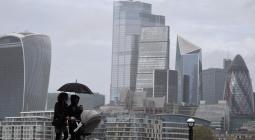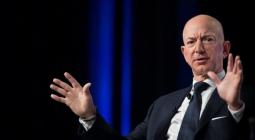Eat the Rich, Save the Planet.

The world’s richest 1% must reduce their carbon footprint by a factor of 30 to save the planet.
According to the UNEP Emissions Gap Report for 2020, the world’s wealthiest 1% will need to reduce their carbon emissions by a factor of 30 to keep the world on track to attain the Paris Agreement targets.
Despite a pandemic-linked economic slowdown that is expected to result in a 7% drop in greenhouse gas emissions, the planet is still on track to warm to well above 2 degrees Celsius. The reduction in emissions felt this year would only translate to a 0.01 degree Celsius drop in global warming by 2050. In other words, the planet is currently headed for a future that is 3.2 degrees Celsius warmer by the end of the century, even if the world fully implements and achieves its emission reduction contributions under the Paris Agreement.
Where we stand.
Currently, the emissions of the wealthiest 1% contribute to more than double the combined greenhouse gas emissions of the world’s poorest 50%, making the rich among the leading causes of climate change.
According to the Credit Suisse Global Wealth Report, the world’s richest 1% have a net worth of over $1 million. The world’s richest 10% have a net worth of over $100,000. Individuals with a net worth of less than $10,000 make up the world’s poorest 50%.
Shifting to a more environmentally-friendly narrative will require avoiding the typical high-carbon consumption patterns of the wealthy by changing consumption and lifestyle behavior dramatically. This would require the redesign of cities to make them more bike- and pedestrian-friendly, making residences more energy-efficient, and reducing car and air travel.
However, it isn’t as simple as placing a wide-sweeping emission-reduction measure on the entire planet. According to the UNEP report, the distribution of lifestyle emissions varies greatly from country to country. The average consumption emissions of a person living in the United States is 17.6 tonnes of carbon dioxide per year. That is ten times that of a person living in India, which is 1.7 tonnes of carbon dioxide per year. Sitting in the middle ground is the United Kingdom and European Union, whose citizens have an approximate carbon footprint of 7.9 tonnes per year.
Researchers at the UNEP suggested that there is a “strong correlation between income and emissions,” which accounts for the unequal distribution of consumption-related emissions. As mentioned above, the emissions of the richest 1% of the global population likely accounts for double the emissions caused by the poorest 50%. The report estimates that half of the individuals who are part of the 1% club are citizens of the highest-income countries, while the other half are citizens of middle-income countries. Those that find themselves in the “super-rich” category often have emissions of roughly 217 tonnes of carbon dioxide per year, which is “several hundred times greater than the average of the poorest half of the global population.”
It’s estimated that the global richest 10% use 45% of all energy for land transport and 75% of all energy for air travel. Comparatively, the poorest 50% use only 10% of all energy for land travel and 5% of all energy for air travel.
Considering these inequities in global consumption resulting in affluenza, it’s important to determine these inconsistencies before laying out the framework for equitable low-carbon lifestyles.
Where we need to go.
To achieve the Paris Agreement objectives and limit global warming to 1.5 degrees Celsius, the average global per capita emissions will need to be limited to 2.1 tonnes of carbon dioxide by 2030. This would mean that the global richest 10% would need to reduce their emissions to one-tenth of their current levels. The richest 1% would have to decrease their emissions by a factor of 30, whereas the poorest 50% could increase their emissions to three times their current level.
Lifestyle changes that reduce emissions in three key sectors (transportation, food, and residential) would mitigate climate change. The “Avoid-Shift-Improve” framework discussed in the UNEP report is one of the ways to understand how changes in these sectors can be made to reduce lifestyle emissions.
The “Avoid” category refers to a reduction in emissions by foregoing some type of consumption. For example, an individual could travel less, could buy local produce, and could use fewer household appliances as a way to reduce emissions in the three key sectors.
The “Shift” category focuses on a shift in behavior towards favoring more eco-friendly options. Consumers could limit their travel destinations to only places they can reach by car, eat a plant-based diet, or only wash their clothes in cold water.
Finally, the “Improve” category looks to reduce emissions by having individuals switch to more efficient, low-carbon consumption without changing the amount they consume. For instance, consumers could buy electric vehicles, buy organic food products, or power their homes with renewable energy.
How we will get there.
Economic policies, legal frameworks, monetary incentives, and advances in infrastructure are all mechanisms required to instill a full lifestyle change in the richest 1%. While these are all substantial methodologies to force a change, they’re only a part of the puzzle. The choice an individual makes operates within broader contexts that don’t only include economic and legal parameters. Physical environments, media and advertising, social conventions, interpersonal influence, habits and routines, consumer choices, and attitudes and awareness all play a part in the enablement or constraint of a decision — particularly where lifestyle changes are concerned.
Incentives, targeted information, and choice provision play three key roles that have been used in the past to try to “nudge” people in the direction of a more environmentally sustainable lifestyle. However, these tactics are rarely enough to elicit profound change. According to the UNEP report, attempted sustainable transitions in the past have not been driven by consumers voluntarily choosing to consume more responsibly. Instead, social norms and changing product availability have been the causes of substantial change.
The report goes on to discuss how changes to infrastructure and social conventions, social influence, citizen participation, and habit disruption, are all methods required to cause society-wide lifestyle changes.
In the developed world, the accessibility of cars to wealthy individuals has enabled urban planning to cater to a car-dominant society. Cities are becoming more spread out, highways are getting wider to support more cars on the road, and it’s not uncommon for a wealthy household to own more than two vehicles. To reduce transportation-caused lifestyle emissions, urban planning must emphasize self-powered travel by making cities more walkable or bikeable. Furthermore, infrastructure must be put in place to support a more sustainable lifestyle, including increased charging ports for electric vehicles or more efficient public transport. The daily conventions of life will also need to be altered, so people can work and live their lives closer to their homes.
Social influence is known to be a catalyst for lifestyle change through the spread of behaviors through peer influence and challenging societal norms. Social influence is the reason why more companies are adding solar panels to their buildings, why people are transitioning to a vegan diet, and why businesses are trying to offer environmentally-friendly products. Unfortunately, social influence is one of the reasons why the lifestyles of the rich and famous have become desirable and have encouraged society to avoid cooperation with green initiatives. However, if those individuals make lifestyle changes themselves, their millions of followers will quickly follow suit.
Finally, the disruption of habitual behavior is a requirement in the breakdown of the firewall leading to a lifestyle change. Habits are based on stable contexts, which makes them suitable for permanent repetition. However, by changing the context in which the habit stands. the behavior itself comes into question, and the overall lifestyle routine can be disrupted. Disrupting behaviors and habits opens an opportunity for a new lifestyle to take shape, one that promotes a more sustainable way of living that encourages walking to work or investing in energy-efficient appliances.
Through a rich combination of structural (legal frameworks, economic policies, infrastructure), social and contextual (media and advertising, social conventions, interpersonal influence), and personal (behavior changes, consumer choices, awareness, and attitudes) approaches, integrated policies can be formed to simultaneously force and encourage the richest individuals in society to undergo lifestyle changes to support a more eco-friendly way of life.
Ultimately, the transition to environmentally sustainable lifestyles by the global wealthiest 1% will require deep-rooted socioeconomic, cultural, political, and behavioral changes that will require the participation in equal parts of the rich and famous and the government. Doing so will cause dramatic cuts to greenhouse gas emissions and will ensure the world achieves the Paris Agreement objectives promptly for both the future of the planet and its citizens.
Final thoughts.
“When the people shall have nothing more to eat, they will eat the rich.” — Jean-Jacques Rousseau
No longer can the middle class and global poorest 50% be stuck with saving the environment. They can continue carrying their sustainable grocery bags, taking public transportation, and turning down the thermostat, but at the end of the day, real positive climate change won’t happen until the richest 1% stop living their polluting lifestyles.
I’m not saying the richest 1% or even the richest 10% need to stop living the lifestyles they’ve grown accustomed to. They’ve worked hard to attain their wealth (for the most part), and I think they deserve to enjoy their money. I’m also not suggesting that there needs to be a massive redistribution of the world’s wealth (although that would solve a lot of the world’s problems). However, what I am saying is that the wealthy need to figure out how to live more sustainably so there won’t come a time where Jean-Jacques Rousseau’s statement becomes true. The rich can install solar panels on their mansions, can purchase electric or hybrid cars, can stop flying their private jets carrying only a couple of individuals, and can eat less meat as part of their diet.
The richest 1% will be those responsible for the world overshooting the Paris Agreement objectives, and while it may not mean much to them, it will mean a lot to the rest of us. The wealthy will be able to flee the worst of climate change, leaving those of lower socioeconomic status to bear the brunt of mega-storms, drought, famine, and air pollution. In the last year, it has been shown time and time again that climate change has primarily battered developing countries and lower-income communities.
The UNEP report offers a sobering look at the world’s uphill battle against climate change and reminds us that no matter how many plastic bags we refuse at the grocery store or how many times we take public transportation, nothing will slow climate change like the richest 1% limiting their own carbon emissions. However, instead of being discouraged, we should feel proud of the fact that many of us are already doing our part to save the planet by abiding by many of the lifestyle changes the report suggests.
There is nothing more the average citizen can do. The global richest 1% now have to decide whether or not to help us sink or swim. However, choosing the former will result in a Rousseau-like future where we must eat the rich to keep the ship afloat.
14 December 2020
medium




